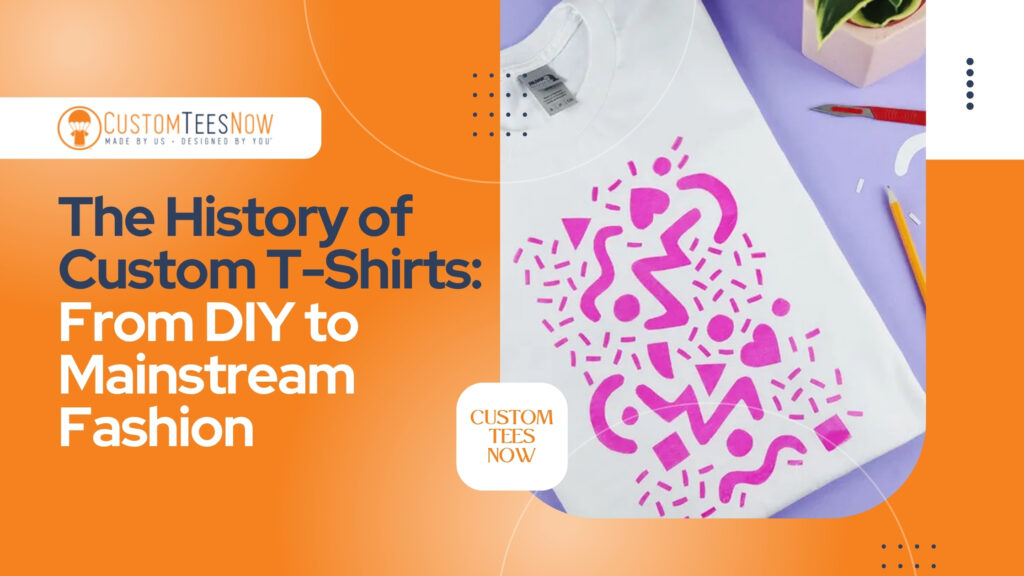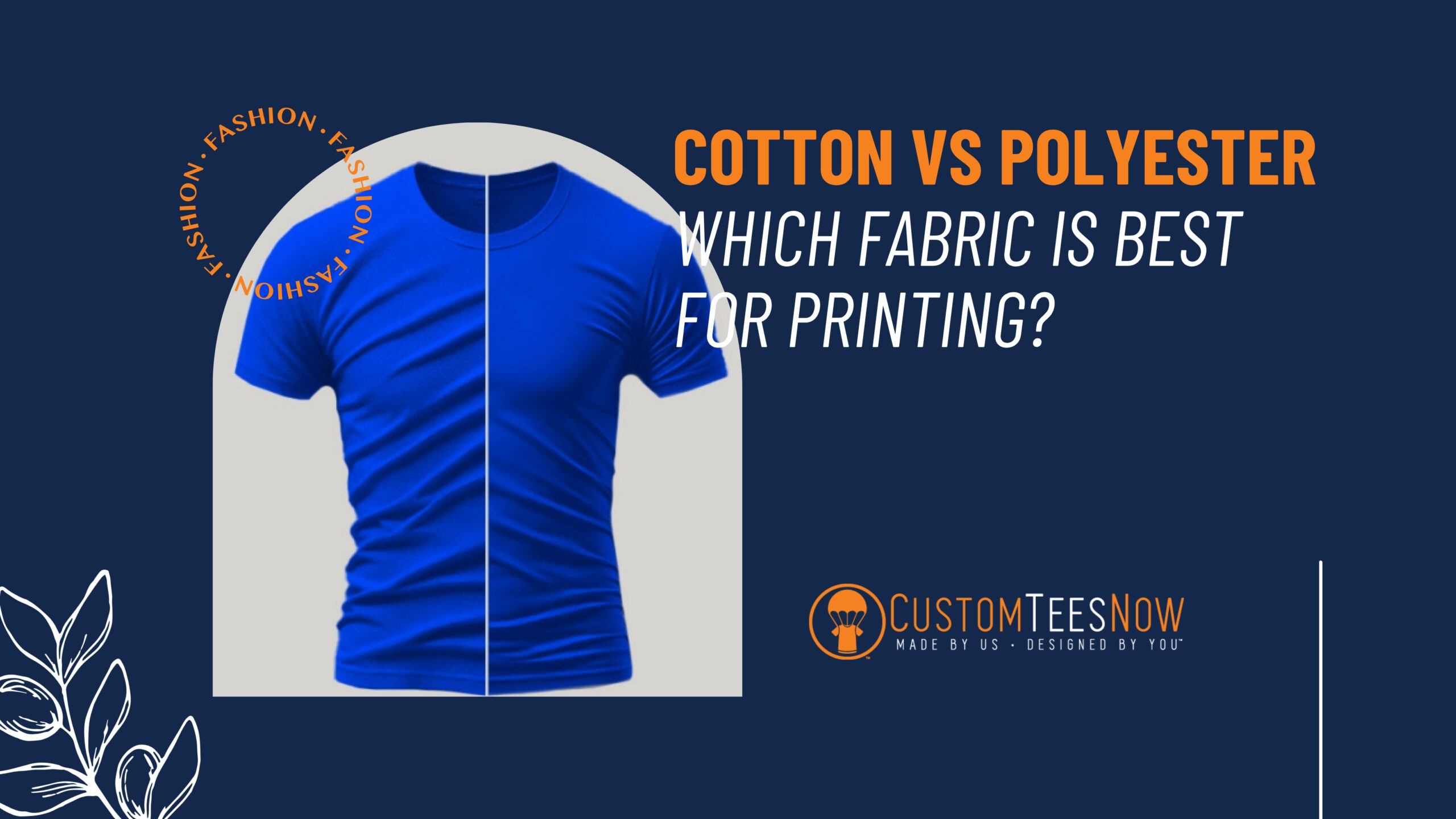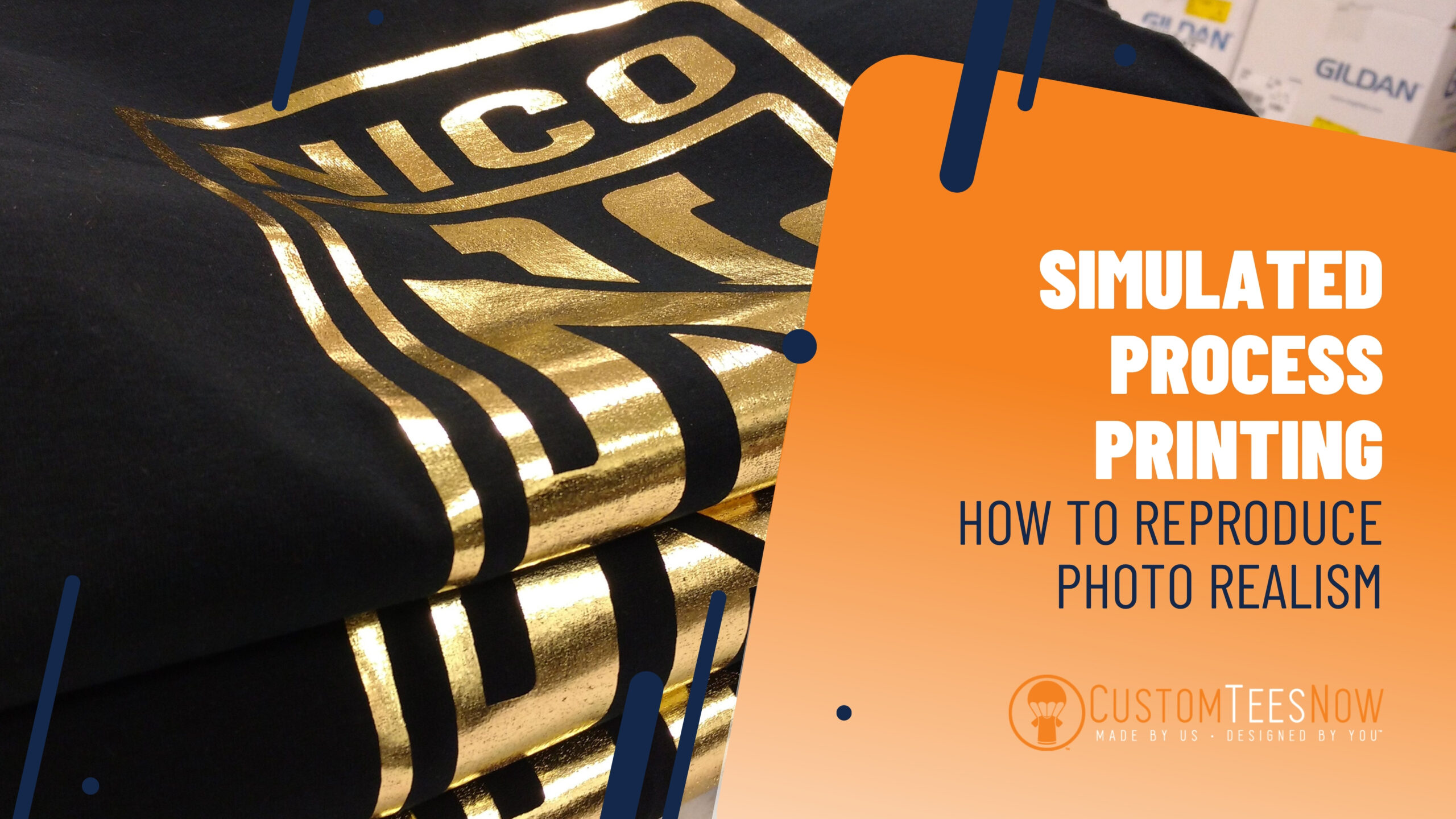
- July 2, 2025
The History of Custom T-Shirts: From DIY to Mainstream Fashion

Custom T-shirts are more than just clothing—they’re a canvas for creativity, a tool for branding, and a mirror of cultural shifts. From their origins as practical undergarments to their status as a global fashion icon, T-shirts have evolved through technological advancements, societal changes, and the rise of personalization. This comprehensive exploration traces the journey of custom T-shirts from DIY experiments to mainstream fashion, highlighting key milestones, cultural impacts, and modern trends that have shaped their enduring appeal.
Origins of the T-Shirt
The T-shirt’s story begins in the 19th century, rooted in practicality and functionality. During this period, laborers wore one-piece union suits—long underwear designed for warmth and coverage. In hot environments, workers, such as miners and stevedores, began cutting these suits into separate tops and bottoms for comfort. The top, with its distinctive T-shaped silhouette, became the precursor to the modern T-shirt.
By the late 19th century, these tops were widely used in industries requiring physical labor. The term “T-shirt” first appeared in F. Scott Fitzgerald’s 1920 novel This Side of Paradise, signaling its entry into popular vernacular. However, T-shirts remained primarily undergarments or workwear at this stage.
In 1913, the U.S. Navy formalized the T-shirt’s place in history by issuing white cotton T-shirts as standard undershirts for sailors. This marked the beginning of mass production, with companies like Fruit of the Loom producing T-shirts for military and civilian use. Sailors in tropical climates began wearing T-shirts as outerwear, a practice that spread to civilians by the 1920s. During the Great Depression, T-shirts became a default choice for workers and children due to their affordability and ease of cleaning.
The post-World War II era saw veterans wearing T-shirts tucked into trousers as casual clothing, further bridging the gap between undergarment and outerwear. By the 1940s, T-shirts were gaining traction as everyday wear, setting the stage for their cultural transformation.
Early Customization (1950s-1960s)
The 1950s marked a pivotal shift for T-shirts, transforming them from utilitarian garments to symbols of rebellion and youth culture. Hollywood played a significant role in this change. Marlon Brando’s iconic portrayal of Stanley Kowalski in A Streetcar Named Desire (1951), wearing a fitted white T-shirt, imbued the garment with a sense of raw masculinity and defiance. Similarly, James Dean’s rebellious look in Rebel Without a Cause (1955) solidified the T-shirt’s association with youth and nonconformity. As Dennis Nothdruft, curator of the T-shirt: Cult — Culture — Subversion exhibition, noted, wearing T-shirts as outerwear was a bold statement, challenging their traditional role as undergarments.
Customization began to emerge in the 1950s, particularly in Miami, Florida, where companies like Tropix Togs started decorating T-shirts with resort names and characters to appeal to tourists. One of the earliest recorded instances of a custom T-shirt was in 1948, when Republican presidential candidate Thomas E. Dewey used T-shirts with the slogan “Do it with Dewey” for his campaign. This marked the beginning of T-shirts as a medium for political messaging.
The 1960s saw an explosion in T-shirt customization, driven by the counterculture movement. The hippie era embraced tie-dyeing, a DIY technique that created vibrant, swirling patterns. Tie-dye kits saw a 300% increase in sales between 1965 and 1970, reflecting the popularity of this hands-on approach. Screen printing also became more accessible, thanks to the invention of plastisol ink in 1959, which allowed for durable, vibrant prints. This led to a 30% increase in custom-printed T-shirt sales between 1955 and 1960.
T-shirts became a canvas for self-expression, with designs reflecting the era’s social and political upheavals. Anti-war slogans, such as “Make Love, Not War,” and civil rights messages appeared on millions of T-shirts, with an estimated 5 million anti-war T-shirts sold by 1970. Rock bands like The Beatles capitalized on the trend, with band merchandise generating significant revenue—$50 million in U.S. sales in 1964 alone, with T-shirts accounting for 10% of the market by 1968.
Mainstream Adoption (1970s-1980s)
The 1970s solidified the T-shirt’s place in mainstream fashion, transforming it into a powerful platform for messaging and branding. The punk rock movement embraced DIY aesthetics, with fans and musicians creating custom T-shirts using Sharpie markers, safety pins, and ripped fabric. Bands like the Sex Pistols and The Clash used T-shirts to promote their music and rebellious ideologies, with designs like the Sex Pistols’ “God Save the Queen” T-shirt selling over 50,000 copies in its first month in 1977.
Social movements also leveraged T-shirts to amplify their messages. The first Earth Day in 1970 saw millions of T-shirts featuring the “Ecology” symbol, while feminist slogans like “Sisterhood is Powerful” sold over 100,000 units by 1975. The New York Times dubbed T-shirts “the medium for the message,” highlighting their role in cultural discourse.
Major brands recognized the T-shirt’s potential as a marketing tool. Companies like Coca-Cola and Disney produced T-shirts with their logos, turning wearers into walking advertisements. Movie and TV tie-ins became popular, with T-shirts featuring characters from films like Star Wars and shows like The Muppet Show becoming collectibles.
In the fashion world, T-shirts began appearing in high-end collections. In 1984, designer Katharine Hamnett made headlines by wearing a T-shirt with an anti-nuclear message to meet Margaret Thatcher, showcasing the garment’s political power. Pop artists like Keith Haring and Jean-Michel Basquiat brought their art to T-shirts, creating limited-edition designs that blurred the lines between art and fashion. By the 1990s, luxury brands like Chanel incorporated T-shirts into their collections, with ribbed knit tank tops featuring iconic logos, further elevating the T-shirt’s status.
Technological Advancements (1990s-2000s)
The 1990s and 2000s brought technological innovations that made custom T-shirt production more accessible and versatile. Screen printing, refined in the 1960s with plastisol ink, remained the dominant method for large orders due to its cost-effectiveness and durability. However, new technologies expanded the possibilities for customization:
-
Direct-to-Garment (DTG) Printing: Introduced in the early 2000s, DTG uses inkjet technology to print full-color, high-resolution designs directly onto fabric. This eliminated setup costs, making it ideal for small runs and intricate designs.
-
Sublimation Printing: Popular for polyester fabrics, sublimation uses heat to transfer dye, creating vibrant, permanent prints suitable for all-over designs.
-
Heat Transfer Vinyl (HTV): This method involves cutting vinyl designs and heat-pressing them onto fabric, perfect for personalized text and simple graphics.
These advancements democratized customization, allowing individuals and small businesses to create unique designs without large investments. Online platforms like Zazzle and Redbubble saw a 300% increase in personalized T-shirt orders from 2005 to 2010, reflecting the growing demand for custom apparel.
The rise of e-commerce and digital design tools further transformed the industry. Companies like Custom Tees Now offer user-friendly platforms where customers can upload designs, choose materials, and preview their creations. This accessibility has made custom T-shirts a go-to choice for events, businesses, and personal projects.
Printing Methods Comparison Table
|
Printing Method |
Best For |
Pros |
Cons |
|---|---|---|---|
|
Screen Printing |
Large orders, simple designs |
Cost-effective for bulk, durable, vibrant colors |
High setup costs, not for small orders |
|
DTG Printing |
Small to medium orders, detailed designs |
No setup costs, quick, full-color prints |
Higher per-unit cost, less durable |
|
Sublimation Printing |
All-over prints on polyester |
Vibrant, soft, fade-resistant |
Limited to polyester, higher cost |
|
Heat Transfer Vinyl |
Personalized text, simple graphics |
Durable, easy to apply |
Limited design complexity, heavy texture |
Current Trends and Sustainability (2010s-Present)
The 2010s marked a new era for custom T-shirts, driven by sustainability and digital innovation. The fashion industry’s environmental impact—producing 1.2 million tons of CO2 annually and using vast amounts of water—prompted a shift toward eco-friendly practices. Consumers, with 66% willing to pay more for sustainable brands according to a 2019 survey, have driven demand for materials like:
-
Organic Cotton: Grown without synthetic pesticides, biodegradable, and hypoallergenic.
-
Bamboo: Fast-growing, requiring minimal water and no pesticides.
-
Hemp: Durable, low water usage, and biodegradable.
-
Recycled Polyester: Made from plastic bottles, reducing landfill waste.
Brands are also adopting sustainable printing methods, such as water-based inks, which reduce chemical waste, and energy-efficient production processes. Some companies offer carbon-neutral shipping and biodegradable packaging to further minimize their environmental footprint.
The digital age has amplified the reach of custom T-shirts. Social media platforms like Instagram and TikTok showcase unique designs, with influencers collaborating on limited-edition collections. Print-on-demand services allow artists to sell designs without inventory, reducing waste. Vintage band T-shirts, such as those from Led Zeppelin or Nirvana, have become highly collectible, with some fetching hundreds of dollars online.
The global T-shirt market, valued at $20 billion in 2020, is projected to grow at a 5% CAGR through 2028. Custom apparel, including T-shirts, is expected to reach $10.4 billion by 2025, reflecting their enduring popularity.
Case Studies
-
Political Campaigns: Thomas E. Dewey’s 1948 “Do it with Dewey” T-shirts were among the first to use slogans for political promotion, setting a precedent for campaign merchandise.
-
Music Merchandise: The Rolling Stones’ “tongue and lips” logo and The Beatles’ 1964 tour T-shirts became cultural artifacts, with band merchandise driving significant revenue.
-
Social Movements: T-shirts for Earth Day 1970 and feminist slogans like “Sisterhood is Powerful” amplified social causes, demonstrating the garment’s power as a communication tool.
-
High Fashion: Chanel’s 1992 ribbed knit T-shirts with the iconic CC logo and Dior’s 2017 “We Should All Be Feminists” design brought custom T-shirts to the runway.
The Future of Custom T-Shirts
The future of custom T-shirts is bright, with innovations like 3D printing and AI-driven design tools promising even greater personalization. Sustainability will remain a priority, with circular fashion models—such as recycling programs and biodegradable fabrics—gaining traction. Digital platforms will continue to make customization accessible, allowing anyone to create unique designs with ease.
Custom T-shirts will likely remain a bridge between personal expression and collective identity, serving as tools for activism, branding, and creativity. Their adaptability ensures they will continue to evolve with changing trends and technologies.
Conclusion
The history of custom T-shirts is a testament to their versatility and cultural significance. From their origins as 19th-century undergarments to their role as mainstream fashion staples, T-shirts have adapted to societal shifts, technological advancements, and consumer demands. The rise of DIY customization in the 1950s, fueled by cultural icons and counterculture movements, paved the way for their widespread adoption. Technological innovations like DTG printing and online platforms made customization accessible to all, while modern trends emphasize sustainability and digital engagement.
Today, custom T-shirts are a powerful medium for personal expression, business promotion, and social change. At Custom Tees Now, we celebrate this legacy by offering tools to create eco-friendly, personalized T-shirts that reflect your unique style or brand. Join us in continuing this vibrant tradition, crafting T-shirts that tell your story while honoring the rich history of this iconic garment.



